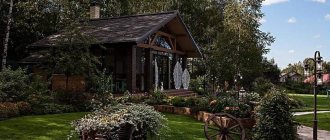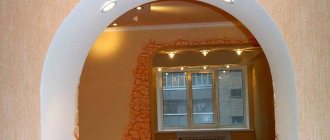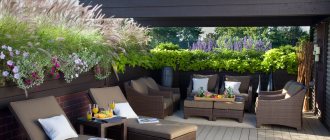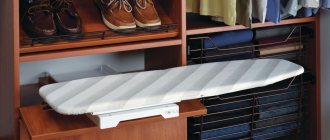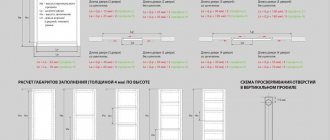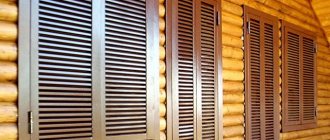Advantages and disadvantages of arc greenhouses
A greenhouse, which is made from arcs and covering material, has the following positive aspects of operation:
- mobile and practical design;
- simple and easy installation. Such buildings do not need a foundation;
- quick dismantling for the winter. When folded, such structures are very compact;
- the model is much cheaper than stationary greenhouses.
The disadvantages here include the following points:
- the covering material is short-lived and needs to be replaced frequently;
- strong winds can damage the integrity of a lightweight structure;
- there is no possibility of installing lighting and heating devices inside the greenhouse.
When planning to build such a structure on your site, you need to first find out its design features.
Arcs made of plastic
You can make a lightweight greenhouse out of arcs using the most ordinary plastic pipes. The installation process differs little from the previous one, only ready-made plastic arcs are used instead of metal ones. You can simply purchase sections of straight pipes, which are cut to the required length and bent with your own hands using the simplest tools.
Here you will have to ensure that all the arcs are the same size and shape, otherwise the resulting structure will not be suitable for planting seedlings, since it will be difficult to create normal conditions in it. Making such a greenhouse out of arches is simple: you need to prepare the area, make a wooden box and drive wooden pegs along the outer perimeter. The pipes are placed on pegs and a plastic film is stretched on top. A door is placed on the sides, all free spaces are also covered with film. The structure for growing vegetables is ready!
Design Features
Greenhouses of this type have an arched structure, each segment of which represents an arc. A non-woven covering material is stretched between the arcs. The height of such structures can range from 0.5 to 1.3 m. Thanks to the varying height, such structures can be used for growing various vegetable crops. Moreover, the width of the arches themselves varies in the range from 0.6 to 1.2 m. The length can be arbitrary. This parameter determines the number of arcs used during assembly. Most often, the length of such greenhouses is 4.6 and 8 m.
Existing models
Today, arc greenhouses are available in various models. Let's look at the most popular options in more detail.
Greenhouse "Dayas"
The basis of the design is a plastic arc. For ease of installation, the frame elements are equipped with special pegs with a length of 20 cm. The covering material is fixed inside the greenhouse. To do this, plastic clips are included with the greenhouse.
The length of the structure is 2 m, and the cross-section is 20 mm. Thanks to its sectional structure, “Dayas” can have a length from 4 to 6 m. At the same time, the width and height are constant values (1.2 m and 0.7 m, respectively).
Greenhouse "Agronomist"
This model has many design points similar to the Dayas. Here, plastic pipes with a cross-section of 20 mm and pegs with a length of 20 cm are also used as a frame.
In its finished form, “Agronomist” has a height of about 0.7–0.9 m. This parameter depends on the type of arches. The length can vary from 4 to 6 m. Agrotex 42 fabric is used as a covering material.
Greenhouse "Snowdrop"
A very popular model. It is available in four sizes: 8, 6, 4 and 3 m. The frame is made of polyvinyl chloride tubes (section 20 mm). Covering material “SUF-42” or spunbond is stretched between the arches. Its main feature is that it is highly resistant to ultraviolet radiation.
Greenhouse "Quickly ripened"
This model has a huge variety of arches. The arcs are made of metal and have a PVC sheath. The arches are connected to each other by special crossbars. The covering material is fixed using pegs and clamps. The width, height and length of the structure depend on the type of model. Typically they are 1.0–1.1 m, 1.2–1.6 m, 3 and 5 m respectively.
Greenhouse "Cucumber"
The frame of this model is assembled from pipes (size 1x1.1x5 m) and galvanized profile. Both film and polycarbonate can be used as cover. All parts needed for assembly are included in the kit.
Greenhouse "Hawk"
For this model, the greenhouse arcs have the form of HDPE pipes with a width of 1.2 m and a length of 6 m. During the assembly process, you need to bend the arcs to the required radius. After that, they are stuck into the ground and covered with film or polycarbonate on top. "Hawk" is used for growing vegetables and heat-loving crops.
DIY making
If you don’t want to spend money, you can make a greenhouse with your own hands. There are several manufacturing options.
Greenhouse made of aluminum arcs
Using double aluminum arcs, you can make a good greenhouse. You can get an aluminum profile from a metal warehouse or make it to order. It is worth noting that construction in this case is difficult if there is no professional experience.
It is convenient to attach aluminum arches to nuts and bolts. You can install such a greenhouse either on the ground or on a prepared foundation.
Advantages of aluminum arches:
- strength, long service life;
- light weight;
- convenience of cladding with covering material;
- corrosion resistance;
- ease of assembly.
The only drawback is the relative high cost.
Installation is simple. You can install a greenhouse either on the ground or on a pre-prepared foundation. It is convenient to attach aluminum arches to nuts and bolts.
You may be interested in an article in which we talk about making greenhouses for cucumbers yourself.
Frame made of metal-plastic pipes
You can also make a greenhouse from metal-plastic pipes. The product will be noted for its low weight and good strength. It is better to purchase used pipes from a heating or plumbing system in order to save money.
To build a greenhouse, it is better to select large-diameter pipes. The arcs are durable and resistant to corrosion.
Metal-plastic arches are durable and resistant to corrosion
Steel pipe frame
Do-it-yourself arcs for a greenhouse can be made from steel plumbing profiles of small diameter. In this case, you can save money when building a greenhouse.
Among the disadvantages of manufacturing such a design, it is worth highlighting the need for a welding machine and a pipe bending machine. But if the necessary tools are present, installation will not take much time.
Points to pay attention to:
- the outer diameter of the pipes should be 20 or 26 millimeters;
- The bending angle and height of the arc can be any;
- if there are few pipes, you can make a meter-long greenhouse.
Plastic arch construction
Making a greenhouse from plastic arcs is the easiest way. A propylene or thick-walled hose is available in almost every household.
- Cut the hose or pipe into equal lengths. Their length should be less than 5 meters. Such segments will be used as arcs.
- If the hose is soft, it must be reinforced. A willow rod will do the job. Just insert it into the hose.
- Cut stakes from metal or wood according to the cross-sectional diameter of the arcs. Their length should start from 50 centimeters.
- Place stakes in the ground in parallel rows. The step between them should be 50 centimeters.
- Next, place one end of the pipe on the first pin, and the other end on the second.
- Repeat the process with all pipes.
Making a greenhouse from plastic arcs is the easiest way. A propylene or thick-walled hose is available in almost any household
You can also learn about the best options and features for making small greenhouses yourself.
Important! In order for the arcs to be well fixed on the pins, longitudinal 10-centimeter cuts must be made at the ends of the hoses. Then, at the cut site, the hose is tightened with a water clamp.
All that remains is to install the covering material and the greenhouse can be used. It is not recommended to make the structure more than 10 arcs in length. If winds often blow in your region, it is worth making wooden supports at the ends.
Types of arcs and choice of material
Arcs for a greenhouse of this type can be made from the following materials:
- metal. Such greenhouse arches are highly durable. They are easy to work with. They are resistant to adverse environmental factors. The production of metal arcs is best established. Therefore, there are no problems with finding this kind of arched structural elements for greenhouses. The disadvantages here include high cost, significant weight, and tendency to corrode;
- plastic. In order to become resistant to external factors, arches need to be painted with special coloring compounds. Such arcs for greenhouses are cheap and durable;
- wooden. The advantages of this material include strength, reliability and environmental friendliness. The main disadvantage is that before installation, the wooden frame elements must be treated with an antiseptic.
It is worth noting that you can make a greenhouse from arcs with your own hands using available materials (for example, an unnecessary watering hose). Here it is allowed to use anything that can be used to make arcs for a greenhouse.
Conclusion
Harvest in a homemade greenhouse
Regardless of what interests you, be it greenhouses made of plastic pipes or their analogues made of aluminum profiles, you can assemble such a structure with your own hands without the need to involve professional installers.
The assembly of greenhouses from a curved profile is more simple compared to structures based on profiles with a complex configuration. Moreover, the frame on the arches is not only easier to assemble, but also easier to cover with film or sheathe with polycarbonate sheets.
The installation instructions are quite simple, but if you have any questions, watch the video in this article (find out why reinforced film for greenhouses is better than regular film).
Selection of covering material
The selected arcs are covered with material. The following products can be used as an external coating in such structures:
- films of various thicknesses. They have the lowest strength;
- reinforced (reinforced) film;
- polycarbonate The most durable and practical to use;
- any non-woven material. It should be noted that it will not be possible to sew a cover for a greenhouse, since the tightness of the entire structure will be compromised.
In this case, your choice must be made based on the positive and negative aspects of using one or another external coating.
Clamps for greenhouse arcs
The selected covering material is secured with clamps; they can be double or regular, to the arches, depending on its diameter. Before purchasing clips for arcs, you need to decide on the covering material.
Greenhouse covering materials can be:
- Polyethylene film in roll;
- Perforated black polyethylene film;
- Packaged polyethylene film;
- Green reinforced polyethylene film;
- Covering material Spunbond;
- Bird net;
- PVC film;
- Case for roses and shrubs.
For the best possible fastening of the covering material to the greenhouse, special pegs are used, they are attached to the greenhouse frame. A tall greenhouse called “Rainbow” consists of galvanized pipes and polycarbonate sheets, and has positive reviews from summer residents and amateur gardeners.
Polycarbonate covering material is used for a more durable greenhouse structure.
Since polycarbonate weighs much more than film, the frame should be as rigid and strong as possible; for this we choose a galvanized profile or from a profile pipe.
